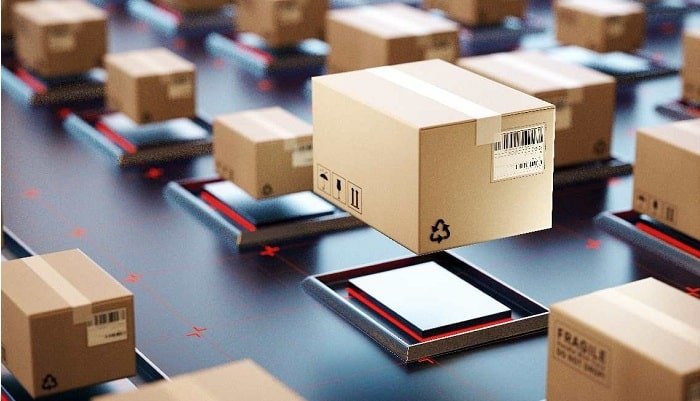
In the ever-evolving world of logistics, packing and shipping services are experiencing a transformation driven by technology and innovation. As businesses strive to meet customer demands for faster, more efficient, and environmentally friendly delivery options, several key trends are shaping the future of this industry. From smart packaging technology to drone delivery services, let’s explore the exciting advancements that are set to redefine how we pack and ship goods.
Smart Packaging Technology: Enhancing Tracking and Efficiency
Smart packaging technology is revolutionizing the logistics industry by integrating advanced tracking systems and sensors into packaging materials. These innovations not only enhance the efficiency of packing and shipping services but also improve the overall customer experience.
Imagine receiving a package that can communicate its location, temperature, and condition in real-time. This is the promise of smart packaging. Utilizing Internet of Things (IoT) devices and RFID tags, smart packaging provides precise tracking information, reducing the risk of lost or stolen packages. Additionally, temperature-sensitive goods, such as pharmaceuticals and perishable foods, can be monitored throughout the shipping process to ensure they arrive in optimal condition.
Moreover, smart packaging can help streamline inventory management. By providing detailed data on stock levels and movement, businesses can reduce waste, prevent overstocking, and optimize their supply chain operations. This technology not only enhances efficiency but also offers a level of transparency and security that was previously unattainable.
Sustainable Shipping Solutions: Eco-friendly Materials and Methods
As environmental concerns become increasingly pressing, the logistics industry is under pressure to adopt more sustainable practices. Sustainable shipping solutions are gaining traction, focusing on eco-friendly materials and methods to reduce the carbon footprint of delivery services.
One significant development in this area is the use of biodegradable and recyclable packaging materials. Companies are now investing in alternatives to traditional plastics, such as mushroom-based packaging, cornstarch peanuts, and recycled cardboard. These materials not only minimize environmental impact but also appeal to environmentally conscious consumers.
In addition to sustainable packaging materials, methods like carbon-neutral shipping are becoming more popular. This approach involves offsetting the carbon emissions generated by shipping activities through initiatives like tree planting, renewable energy projects, and carbon credits. By adopting these methods, businesses can demonstrate their commitment to sustainability and attract a growing segment of eco-aware customers.
Automation in Warehousing: Robotics Streamlining Packing Processes
Automation is another trend reshaping the packing and shipping landscape. In warehousing, robotics and automated systems are streamlining packing processes, increasing efficiency, and reducing human error.
Robotic systems can handle a variety of tasks, from sorting and packing to labeling and palletizing. These systems are capable of working 24/7, significantly boosting productivity and reducing labor costs. For instance, automated guided vehicles (AGVs) can transport goods within a warehouse without human intervention, while robotic arms can precisely pack items into boxes, ensuring optimal use of space and materials.
The integration of artificial intelligence (AI) and machine learning further enhances the capabilities of these automated systems. By analyzing data and learning from past operations, AI-powered robots can optimize packing processes, predict demand, and adjust inventory levels accordingly. This level of automation not only speeds up the packing and shipping process but also enhances accuracy and reliability.
Drone Delivery Services: Fast and Innovative Shipping
Drone delivery services are perhaps the most futuristic trend in the packing and shipping industry. These unmanned aerial vehicles promise to revolutionize last-mile delivery by offering fast, efficient, and innovative shipping solutions.
Drones can bypass traditional road traffic, delivering packages directly to customers’ doorsteps in a fraction of the time it takes conventional delivery methods. This is particularly advantageous in urban areas with heavy traffic congestion or in remote locations where traditional delivery vehicles might struggle to reach.
Several companies are already piloting drone delivery services. For example, Amazon’s Prime Air aims to deliver packages within 30 minutes of an order being placed. Similarly, UPS and Google Wing have launched their own drone delivery trials, showcasing the potential for this technology to transform the logistics industry.
However, widespread adoption of drone delivery services faces several challenges, including regulatory hurdles, safety concerns, and technological limitations. Despite these obstacles, the potential benefits of drones—such as reduced delivery times and lower emissions—make them a promising solution for the future of packing and shipping.
Conclusion
The future of packing and shipping is being shaped by innovative technologies and sustainable practices. Smart packaging technology enhances tracking and efficiency, while sustainable shipping solutions address environmental concerns. Automation in warehousing streamlines packing processes, and drone delivery services offer a glimpse into the future of fast and innovative shipping. As these trends continue to develop, businesses must adapt to stay competitive and meet the evolving demands of consumers. Embracing these advancements not only improves operational efficiency but also contributes to a more sustainable and customer-centric logistics industry.



